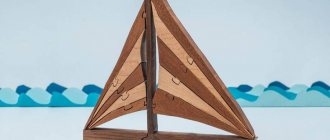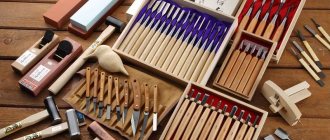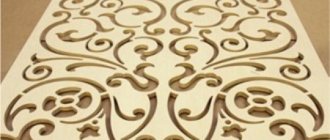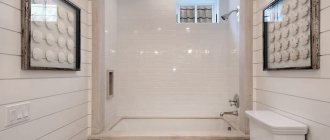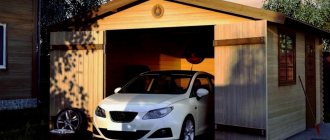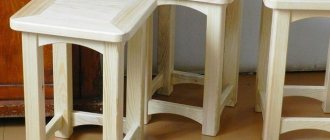House carving is a beautiful and practical solution for interior and exterior decoration. Carving was intended to decorate one's home outside and inside with the help of carved items. With the help of a carved facade you can make your home festive. All protruding and overhead elements of the house's facade were decorated with carvings: cornice, platband, piers, porch pillars, roofs.
Types of technology
There are such types of house carvings: relief, flat-relief, contour, slotted. If you need to decorate a table, mirror frames, or a closet, you should choose a blind relief carving. It has the appearance of a relief pattern and is performed on a blank background. When performing, floral ornaments, images of mythological creatures and animals are used. In the photo it looks like this:
Flat-relief carving is a “relief on a plane”. It is characterized by deepening or removing the background around the ornament by 5-7 mm. The image will be three-dimensional. Using the flat-relief carving technique, compositions depicting people, birds and animals look great. This type is very popular for bath themes.
Contour carving is characterized by the contouring of images. This is one of the simplest types of carving. It is used to decorate dishes, cutting boards, and household items. In contour carving, figurative motifs are used: flowers, leaves, animal figures.
Openwork carving was used to decorate railings, stairs, trim, doors, etc. This is the youngest type of carving, approximately 150 years old.
Materials for slotting threads
In most cases, plywood is chosen for this type of work - it is uniformly thin, has a pleasant color and structure, and does not suffer from further use or storage, unlike solid wood. It is the choice of material that becomes the third pillar of successful work.
The modern market is replete with different types of materials, so it’s easy to get confused. For this work you should choose:
- FC plywood – harmless to humans and the environment, durable, easy to cut, practical;
- FB plywood is also safe for humans, but resistant to aggressive environments, since it undergoes special processing and receives a protective coating, which is why it can cost an order of magnitude more.
Operating procedure
- We are preparing a rough sketch of the house;
- We calculate the required amount of material, select the type of material and prepare boards of the required size;
- We make the necessary templates for house carvings. To do this, you should think carefully about the ornament; the elements of the composition must certainly be repeated;
- Prepare machines for carving.
You can’t start carving without becoming familiar with its technique. You need to start with the execution of geometric patterns.
Templates can be made to order by a craftsman. For this purpose, provide your sketch, drawing or photo. Many craftsmen make their own tape stencils for carving.
Related article: Paper carnations using origami technique
Cutting out signs
The signs tend to be irregular in shape. The contours of the product emphasize the curves of the letters, so you will have to tinker with the workpiece, cutting out excess fragments in certain places. The letters can be drawn by hand using a pencil and ruler, or you can download a ready-made inscription from the Internet. Making signs is very simple, so this option is ideal for beginning carvers. All you need for the job is a blunt knife and the Bogorodsk set “Tatyanka”. After cutting, the plate is sanded and covered with stain. When the composition dries, the recesses are additionally emphasized with a second layer. The inscriptions on the signs for the bathhouse are complemented by clouds, oak or birch leaves, ladles, basins with brooms. For the street, use a beautiful, even font and neat curls along the contour, since drawings would be inappropriate here. In the same way, you can make an original sign for a retail store or pub, for example.
Making a template
Ready-made templates are used to make platbands. They can be found freely available on the Internet. You can make the template yourself if you can’t find the option you need:
- We select a suitable drawing;
- We transfer the contours of the pattern onto tracing paper. To do this, use a ballpoint pen or a soft pencil;
- If you need to enlarge or reduce the picture, use the grid. We transfer the contours onto tracing paper. We divide the image field into squares and number each one. On a cardboard sheet or thick paper there should be the same number of squares with larger or smaller sizes. The selected image must be redrawn into a new grid;
- Using carbon paper, transfer the drawing onto a wooden blank.
The template can also be made from plywood.
Finish coating
The box is sent to the final stage of work - varnishing. There are many options for what exactly to cover the casket with. The most convenient for a beginner would be acrylic varnish in an aerosol can. It applies a protective layer evenly and quickly. The varnish will perfectly preserve the natural color of the wood, hide traces of superglue, and add shine. Finally, it will protect the box from the possible destructive effects of sunlight and oxygen, from water, dirt and dust.
If you are going to apply the varnish with a brush, be prepared for the fact that the process will be long and multi-step. It is necessary to cover the casket in several layers, each time waiting for the previous one to dry. Aerosol varnish is much more convenient.
All that remains is to wish you successful testing, deft management of tools and pliable, high-quality wood. And remember, appetite comes while eating: in the process of carving, new creative ideas and the mood for bringing them to life arise!
Features of the method
If we drive through the Russian outback, we will definitely see overhead elements of house wood carving on the facades of houses. Since pagan times, there has been a tradition of decorating the exterior with carved patterns. Nowadays, it has regained its relevance.
Russia has always been famous for its timber reserves and its forests. Therefore, most of the houses and outbuildings were built from high-quality wood, and many of these houses still stand today.
Wood lends itself very easily to various types of processing, so almost everyone could afford to decorate the facade with carvings, which were most often done with their own hands or with the help of craftsmen.
There are a huge number of books that will help you find the necessary sketches and ideas for house carvings with photos and examples of the work of skilled craftsmen.
Remember that the main thing when working with wood is imagination and creativity. Use unique sketches for carving and your products will be unusual, expressive and will highlight the individuality of the master. Therefore, experiment and good luck to everyone!
What you should know about platbands
If you want to use drawings for making platbands with your own hands, you should know what the patterns on them mean.
The meaning of carved elements in Russian tradition
Template with floral pattern.
What do the patterns mean:
- Wings represent strength.
- Images of birds are elements that connect all times.
- The sun symbolizes energy and life. Usually, it is placed on a kokoshnik (diadem).
- Snakes call for fertility and wisdom.
- The crosses speak of the residents’ desire for harmony of the spiritual principle with the material world.
- Floral patterns show a sense of unity with nature.
- Earrings show the hospitality of the home owners.
Carved wooden frames are rarely found in cities. However, in the private sector they are now becoming popular again, making houses under construction unique and stylish.
Metal finish.
At the moment, such decor is made not only from wood. Patterns for platbands made of non-ferrous metal and PVC are common. MDF and plywood are used for the interior design of doors and windows.
Functional purpose
Advantages of wooden platbands:
- Organization of space. Thus, the frame, due to its shape, can visually expand a narrow or elongate a low building.
- You can express your individuality or give the building the style of a certain region or era.
- The decor of the windows emphasizes the exterior of the house and makes it possible to combine all the buildings on the site into one ensemble.
- Protecting the joints between the wall and the window from the penetration of moisture and dust.
- Reducing heat losses at the interface between the window block and the wall.
- Reducing the level of external noise.
Note! In some cases, carved platband is the only acceptable finishing option. Thus, the windows of a wooden building will look harmonious only with such a frame. Although its price will be relatively high.
This decor also has disadvantages:
- Dependence on atmospheric influences: temperature changes, moisture, ultraviolet radiation from the sun. They damage the wood.
- Based on this, literacy and high-quality processing of the material is important: the correct selection of wood species, its thorough impregnation with protective compounds, and timely repair of elements.
- The complexity of making carved patterns and designs.
Types of window casings
In the photo - overhead window frames
The instructions warn that the production of window and door trim depends on its type and installation method.
The simplest platbands are standard or flat. More complex and beautiful products are made on special machines. The most aesthetically pleasing is carved wood cladding.
The method by which trims are produced is influenced by how they are installed.
- Telescopic analogues are usually used when framing door openings. Special protrusions in the shape of the letter “L” of the trim fit into special grooves in the box. This pairing is complex, but beautiful.
- Overlay trims are fixed to the window frame with glue or nails.
Platband elements.
Note! Window casings are very diverse in shape and the presence of certain elements. Structurally, their complex types consist of three parts: the upper group is called the frame, the vertical group is called the trim (on both sides of the opening), and the lower group is the apron. Shutters are often included in the decorative finishing composition.


